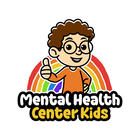|
Key Takeaways:
- DMDD goes beyond typical moodiness. It involves frequent, intense outbursts and ongoing irritability that can affect a child’s daily life.
- Therapy, parenting strategies, school accommodations, and, in some cases, medication can help children learn to manage their emotions.
- Children with DMDD can improve and thrive over time with consistent care and emotional support.
|
Some kids go from calm to furious in seconds, such as yelling over little things, slamming doors, or having big outbursts that don’t match the situation. If your child is always angry or easily upset, it might be more than just a phase. They could be showing signs of Disruptive Mood Dysregulation Disorder (DMDD).
DMDD can be confusing and stressful for families. If your child has the condition, understanding it is the first step toward helping them.
What is Disruptive Mood Dysregulation Disorder?
Disruptive Mood Dysregulation Disorder (DMDD) is a mental health condition that affects children and teens. It makes it hard for them to manage strong emotions like anger or frustration [*].
Note that DMDD goes beyond typical moodiness — kids with DMDD experience severe emotional reactions that can affect their daily life, relationships, and ability to function at school or at home.
DMDD is challenging, but your support as a parent or caregiver can be very helpful for managing the condition.
Key Symptoms of DMDD
What makes DMDD different from ordinary mood swings is the frequency, severity, and consistency of the symptoms. To be diagnosed, a child must show these behaviors for at least 12 months and in two or more settings, like at home and at school.
Here are some common signs to look for:
- Displays intense emotional reactions to minor triggers
- Outbursts tend to occur 3 or more times a week
- Shows constant irritability or anger throughout the day
- Has a hard time getting along with others at home, school, or with friends because of moodiness
Disruptive mood dysregulation disorder symptoms can change as a child gets older. For instance, whereas younger children might have frequent temper outbursts, older kids and teens may internalize their distress. This will increase their risk of developing anxiety or depression.
Causes and Risk Factors of DMDD
The exact cause of DMDD isn’t fully understood, but it is believed that it can result from a combination of factors rather than a single root cause.
Genetics may also play a role — a family history of mood disorders, such as depression or anxiety, may increase the likelihood of developing DMDD. However, even if it runs in the family, it doesn’t mean the child will have it too.
A child’s environment (especially early in life) can significantly influence their risk of developing DMDD. Those who grow up in high-stress situations, such as those involving family conflict or neglect, may be more vulnerable.
One study found that a mother’s level of education also played a role: children born to mothers with fewer than 5 years of schooling were nearly 4 times more likely to develop DMDD compared to those whose mothers had at least 9 years of education.
This means that a mother’s education might help protect her child, possibly because it’s connected to how she parents, provides emotional support, and has access to resources [*].
The same study found that a mother’s mental health during and after pregnancy can impact a child’s risk of DMDD. Children whose mothers had mood symptoms while pregnant were over twice as likely to develop the disorder by age 11.
DMDD vs. Other Mood Disorders
DMDD can look similar to other mood or behavior disorders, which can make diagnosis challenging. Below is a quick comparison to help understand how DMDD is different.
DMDD vs. Bipolar Disorder
The mood shifts in bipolar disorder are episodic, meaning they come and go in distinct phases, such as periods of mania or hypomania followed by depression. These episodes can last days or weeks, and in between, mood may return to a baseline level.
In contrast, DMDD is marked by ongoing, chronic irritability and frequent temper outbursts that occur almost daily without clear cycles of mood elevation or depression.
DMDD vs. Oppositional Defiant Disorder (ODD)
DMDD involves being irritable every day and having frequent outbursts for at least a year in different places, like at home and school.
ODD may be less intense and usually happens when the child deals with adults or people in charge. Some kids can have both, but if signs of DMDD are there, doctors will focus on that diagnosis first.
DMDD vs. Major Depressive Disorder
Major depressive disorder (MDD) in kids usually shows up as sadness, low energy, and not wanting to do things they used to enjoy. It doesn’t usually include the strong, frequent anger seen in DMDD.
Both involve mood problems, but they look different — MDD is mostly about feeling sad, while DMDD is more about being easily irritated and having big anger outbursts.
DMDD vs. Persistent depressive disorder (Dysthymia)
Persistent depressive disorder (also called dysthymia) is a long-lasting low mood. Kids with it may seem sad, negative, or hard on themselves most days for a year or more. But they usually don’t have the angry outbursts seen in DMDD.
DMDD involves a cranky or angry mood with frequent explosive reactions. Both affect daily life, but DMDD is more intense and unpredictable. A full evaluation can help tell them apart.
How DMDD is Diagnosed
To diagnose DMDD, a mental health expert looks at specific signs based on rules in the DSM-5. One main sign is having very strong temper outbursts that don’t match the situation. These outbursts — like yelling, hitting, or acting out — happen a lot, usually 3 or more times a week.
Moreover, DMD has specific age guidelines. The symptoms must start before age 10, but doctors can only diagnose it in kids between 6 and 18 years old. To make sure it’s the right diagnosis, they check to see if the child has other conditions that might look similar, like bipolar disorder, autism, PTSD, or anxiety [*].
A child can have DMDD along with ADHD, conduct problems, or substance use.
Treatment Options for DMDD
Treatment for DMDD takes more than just one solution. It works best when different strategies are used together to help manage symptoms and improve how a child functions at home, in school, and with friends.
The goal is not only to reduce outbursts but also to help kids feel more in control and succeed in their daily lives. Let’s look at some ways to treat DMDD:
Behavioral and Psychotherapy Approaches
Therapy can teach kids better ways to handle anger, stress, and frustration. A helpful approach is cognitive-behavioral therapy (CBT), which helps children understand how their thoughts affect their feelings and actions.
Therapists may also work with families to establish stronger communication and calmer routines at home. For example, a child may learn to take deep breaths or use words instead of yelling when they feel upset.
Medications
Doctors may suggest medicine to help with a child’s mood and behavior. It’s important to note that medications do not cure DMDD, but they can make the symptoms easier to manage.
A doctor may prescribe antidepressants or stimulants, especially if the child also has ADHD or anxiety. Any medication should be closely monitored by a healthcare provider to make sure it’s working and not causing side effects [*].
School Support and Accommodations
Children with DMDD often need extra help at school. Teachers and school counselors can work with parents to create a plan, like an Individualized Education Program (IEP) or 504 Plan.
This plan can include breaks during the day, a calm-down area, or extra support with schoolwork. Such changes will hopefully make school feel less overwhelming and enable the child to stay on track.
Supporting a Child with DMDD
Helping and parenting a child with DMDD takes steady support, clear routines, and a lot of patience. It’s important to create a safe, predictable space while teaching them healthy ways to manage their emotions. Here are some strategies for parents and caregivers:
-
Teach emotion identification - Help children recognize and name their feelings before they escalate.
-
Use calm, predictable responses - Stay composed during the child’s outbursts to model emotional regulation.
-
Create structured daily routines - Predictability will reduce triggers and help children feel more in control.
-
Identify and avoid known triggers - Track patterns to prevent situations that commonly lead to outbursts.
-
Use positive reinforcement - Praise good behavior immediately. Be specific.
-
Create a calm-down space - Designate a quiet area with sensory tools for self-regulation.
-
Collaborate with teachers - Make sure that strategies across home and school environments are consistent.
-
Implement brief, logical consequences - Keep discipline short and directly related to the child’s behavior.
-
Practice problem-solving skills - Work through challenging scenarios when the child is calm and receptive.
-
Take care of yourself - Parental stress management helps you stay patient and consistent.
Long-Term Outlook and Prognosis
The long-term outlook for kids with DMDD depends on how early and how well they’re supported. With the right help — like therapy, school support, and strong family routines — many kids learn to handle their emotions better, build friendships, and do well in daily life.
Remember that DMDD is a serious condition, and if it’s not treated, it can lead to problems later on, such as anxiety, depression, or trouble in school and work. But these outcomes aren’t guaranteed. With early treatment and support from adults who care, children with DMDD can grow up to lead happy and successful lives [*].
The Bottom Line
DMDD in children can be managed. Giving a child early support, which includes therapy and a positive home environment, can enable them to handle their emotions. If you need extra guidance, our full worksheet collection will help your child recognize their triggers and build better coping skills.
FAQs About DMDD
How common is DMDD in kids?
Disruptive Mood Dysregulation Disorder is still being studied, but early findings suggest it may affect about 2% to 5% of children in the United States [*].
Can DMDD be cured?
DMDD cannot be “cured,” although effective treatments can significantly reduce symptoms. These include consistent therapy, family support, and appropriate medication when needed.
Is DMDD considered a form of depression?
DMDD is considered a type of depressive disorder, but instead of sadness, children experience chronic irritability [*]. What makes DMDD unique from other mood disorders is the combination of a persistent angry mood and explosive outbursts that happen multiple times per week.
References:
- Disruptive Mood Dysregulation Disorder: The Basics. (n.d.). National Institute of Mental Health (NIMH). https://www.nimh.nih.gov/health/publications/disruptive-mood-dysregulation-disorder
- Munhoz, T. N., Santos, I. S., Barros, A. J., Anselmi, L., Barros, F. C., & Matijasevich, A. (2017). Perinatal and postnatal risk factors for disruptive mood dysregulation disorder at age 11: 2004 Pelotas Birth Cohort Study. Journal of Affective Disorders, 215, 263. https://doi.org/10.1016/j.jad.2017.03.040
- Carlson, G. A., & Pataki, C. (2015). Disruptive Mood Dysregulation Disorder Among Children and Adolescents. Focus: Journal of Life Long Learning in Psychiatry, 14(1), 20. https://doi.org/10.1176/appi.focus.20150039
- Tourian, L., LeBoeuf, A., Breton, J., Cohen, D., Gignac, M., Labelle, R., Guile, M., & Renaud, J. (2015). Treatment Options for the Cardinal Symptoms of Disruptive Mood Dysregulation Disorder. Journal of the Canadian Academy of Child and Adolescent Psychiatry, 24(1), 41. https://pmc.ncbi.nlm.nih.gov/articles/PMC4357333/
- Copeland, W. E., Shanahan, L., Egger, H., Angold, A., & Costello, E. J. (2014). Adult Diagnostic and Functional Outcomes of DSM-5 Disruptive Mood Dysregulation Disorder. The American Journal of Psychiatry, 171(6), 668. https://doi.org/10.1176/appi.ajp.2014.13091213
- Disruptive Mood Dysregulation Disorder (DMDD). (2025, June 24). Cleveland Clinic. https://my.clevelandclinic.org/health/diseases/24394-disruptive-mood-dysregulation-disorder-dmdd
- Elia, J. (2023, May 11). Depression and mood dysregulation disorder in children and adolescents. MSD Manual Consumer Version. https://www.msdmanuals.com/home/children-s-health-issues/mental-health-disorders-in-children-and-adolescents/depression-and-mood-dysregulation-disorder-in-children-and-adolescents





















































